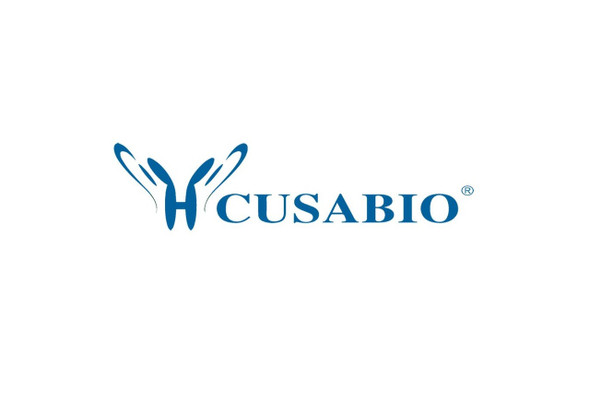Cusabio Human Recombinants
Recombinant human Retinol dehydrogenase 11 (RDH11), partial | CSB-EP019523HU
- SKU:
- CSB-EP019523HU
- Availability:
- 13 - 23 Working Days
Description
Recombinant human Retinol dehydrogenase 11 (RDH11), partial | CSB-EP019523HU | Cusabio
Alternative Name(s): Androgen-regulated short-chain dehydrogenase/reductase 1HCV core-binding protein HCBP12;Prostate short-chain dehydrogenase/reductase 1Retinal reductase 1 ;RalR1Short chain dehydrogenase/reductase family 7C member 1
Gene Names: RDH11
Research Areas: Neuroscience
Organism: Homo sapiens (Human)
AA Sequence: PQIRKMLSSGVCTSTVQLPGKVVVVTGANTGIGKETAKELAQRGARVYLACRDVEKGELVAKEIQTTTGNQQVLVRKLDLSDTKSIRAFAKGFLAEEKHLHVLINNAGVMMCPYSKTADGFEMHIGVNHLGHFLLTHLLLEKLKESAPSRIVNVSSLAHHLGRIHFHNLQGEKFYNAGLAYCHSKLANILFTQELARRLKGSGVTTYSVHPGTVQSELVRHSSFMRWMWWLFSFFIKTPQQGAQTSLHCALTEGLEILSGNHFSDCHVAWVSAQARNETIARRLWDVSCDLLGLPID
Source: E.coli
Tag Info: N-terminal 6xHis-SUMO-tagged
Expression Region: 22-318aa
Sequence Info: Cytoplasmic Domain
MW: 49 kDa
Purity: Greater than 90% as determined by SDS-PAGE.
Relevance: Exhibits an oxidoreductive catalytic activity towards retinoids. Most efficient as an NADPH-dependent retinal reductase. Displays high activity towards 9-cis and all-trans-retinol. Also involved in the metabolism of short-chain aldehydes. No steroid dehydrogenase activity detected.
Reference: "Initial characterization of the human central proteome."Burkard T.R., Planyavsky M., Kaupe I., Breitwieser F.P., Buerckstuemmer T., Bennett K.L., Superti-Furga G., Colinge J.BMC Syst. Biol. 5:17-17(2011)
Storage: The shelf life is related to many factors, storage state, buffer ingredients, storage temperature and the stability of the protein itself. Generally, the shelf life of liquid form is 6 months at -20?/-80?. The shelf life of lyophilized form is 12 months at -20?/-80?.
Notes: Repeated freezing and thawing is not recommended. Store working aliquots at 4? for up to one week.
Function: Exhibits an oxidoreductive catalytic activity towards retinoids. Most efficient as an NADPH-dependent retinal reductase. Displays high activity towards 9-cis and all-trans-retinol. Also involved in the metabolism of short-chain aldehydes. No steroid dehydrogenase activity detected.
Involvement in disease: Retinal dystrophy, juvenile cataracts, and short stature syndrome (RDJCSS)
Subcellular Location: Endoplasmic reticulum membrane, Single-pass type II membrane protein
Protein Families: Short-chain dehydrogenases/reductases (SDR) family
Tissue Specificity: Predominantly expressed in the epithelial cells of prostate, in both basal and luminal secretory cell populations. Expressed at low levels in spleen, thymus, testis, ovary, small intestine, colon, peripherical blood leukocytes, kidney, adrenal gland and fetal liver. Not detected in prostatic fibromuscular stromal cells, endothelial cells, or infiltrating lymphocytes.
Paythway:
Form: Liquid or Lyophilized powder
Buffer: If the delivery form is liquid, the default storage buffer is Tris/PBS-based buffer, 5%-50% glycerol. If the delivery form is lyophilized powder, the buffer before lyophilization is Tris/PBS-based buffer, 6% Trehalose, pH 8.0.
Reconstitution: We recommend that this vial be briefly centrifuged prior to opening to bring the contents to the bottom. Please reconstitute protein in deionized sterile water to a concentration of 0.1-1.0 mg/mL.We recommend to add 5-50% of glycerol (final concentration) and aliquot for long-term storage at -20?/-80?. Our default final concentration of glycerol is 50%. Customers could use it as reference.
Uniprot ID: Q8TC12
HGNC Database Link: HGNC
UniGene Database Link: UniGene
KEGG Database Link: KEGG
STRING Database Link: STRING
OMIM Database Link: OMIM







![Recombinant Human All-trans-retinol dehydrogenase [NAD (+) ] ADH7 (ADH7) Recombinant Human All-trans-retinol dehydrogenase [NAD (+) ] ADH7 (ADH7)](https://cdn11.bigcommerce.com/s-rvypo0hmzw/images/stencil/590x590/products/1045/1992/cusabio__81676.1638370075__88020.1638523555.jpg?c=1)
![Recombinant Human All-trans-retinol dehydrogenase [NAD (+) ] ADH7 (ADH7) Recombinant Human All-trans-retinol dehydrogenase [NAD (+) ] ADH7 (ADH7)](https://cdn11.bigcommerce.com/s-rvypo0hmzw/images/stencil/590x590/products/7005/13116/cusabio__81676.1638370075__49756.1638526823.jpg?c=1)
